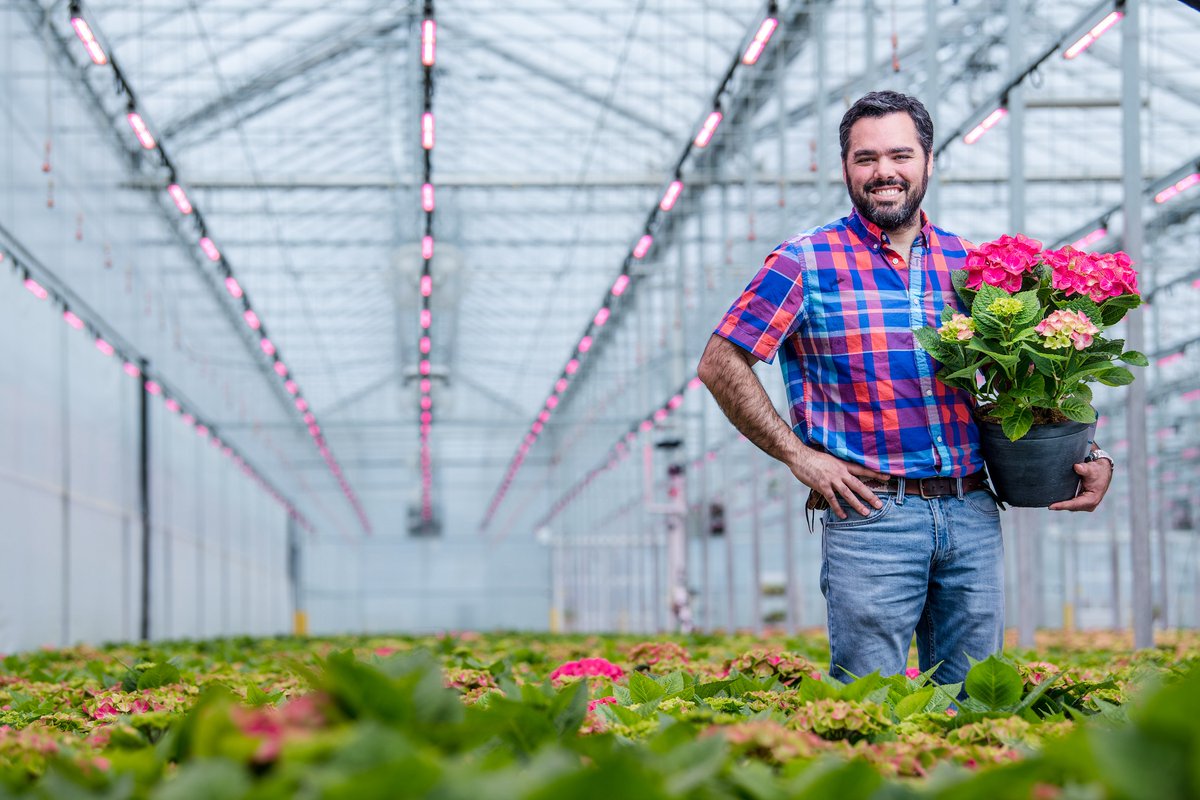
“I’m very happy with the Philips LED lights that we have here… it’s a game-changer for our company.”
Pablo Costa, Operations Manager, Van Belle Nursery
Background
Established in 1973, Van Belle Nursery currently grows more than 400 varieties of plants on 100 acres in the Fraser Valley region of British Columbia. Started by Bill and Grace Van Belle, the success of Van Belle Nursery is due to a commitment to deliver the “best plants, service and shipping experience” to their customers across North America. Their son, Dave Van Belle, is now the president of Van Belle Nursery. Van Belle Nursery has two divisions—young plants, which focuses on hardy, ornamental shrubs and offers top brands including Proven Winners; and retail-ready, which includes hardy ornamental shrubs and perennials in 2 to 5 gallons. In 2018, Van Belle Nursery was awarded two Grower of the Year awards by International Association of Horticultural Producers —a Gold award for Young plants and a Silver award for Finished Plants.
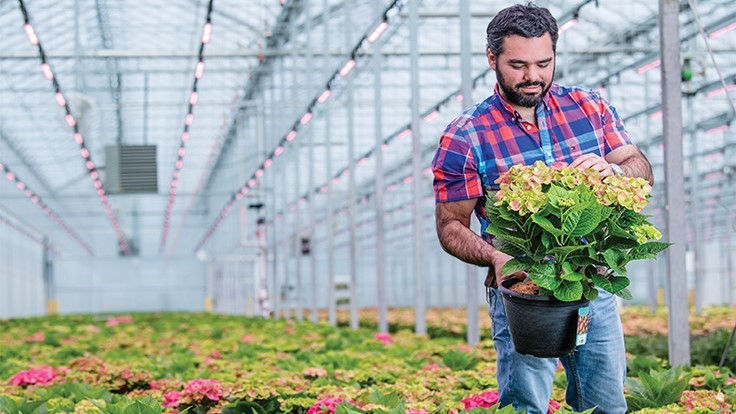
The challenge
Potted hydrangea is just one of the many retail-ready crops grown at Van Belle. To have the hydrangea ready to ship during their sales window of mid-to-late April, Van Belle Nursery knew their hydrangea greenhouse was hugely deficient of natural light. In the middle of winter, crops inside the greenhouse are receiving on average 2 mols per day of natural light at the crop canopy level. Whereas, the DLI (daily light integral) optimal level for finishing potted hydrangea is a minimum of 12 mols per day. “The light intensity is very low so we need supplemental light to reach the early spring window for sales of our retail-ready hydrangea,” said Pablo Costa, Operations Manager of Van Belle Nursery’s retail-ready division. With hydrangea being a “cooler crop”, Van Belle Nursery evaluated supplemental lighting options. In looking into HPS and LED and after careful consideration of all the effects of the two lighting options: energy consumption, heat output and light spectrum, Van Belle Nursery decided to pursue Philips LED toplighting for an approximate one-acre zone growing area.
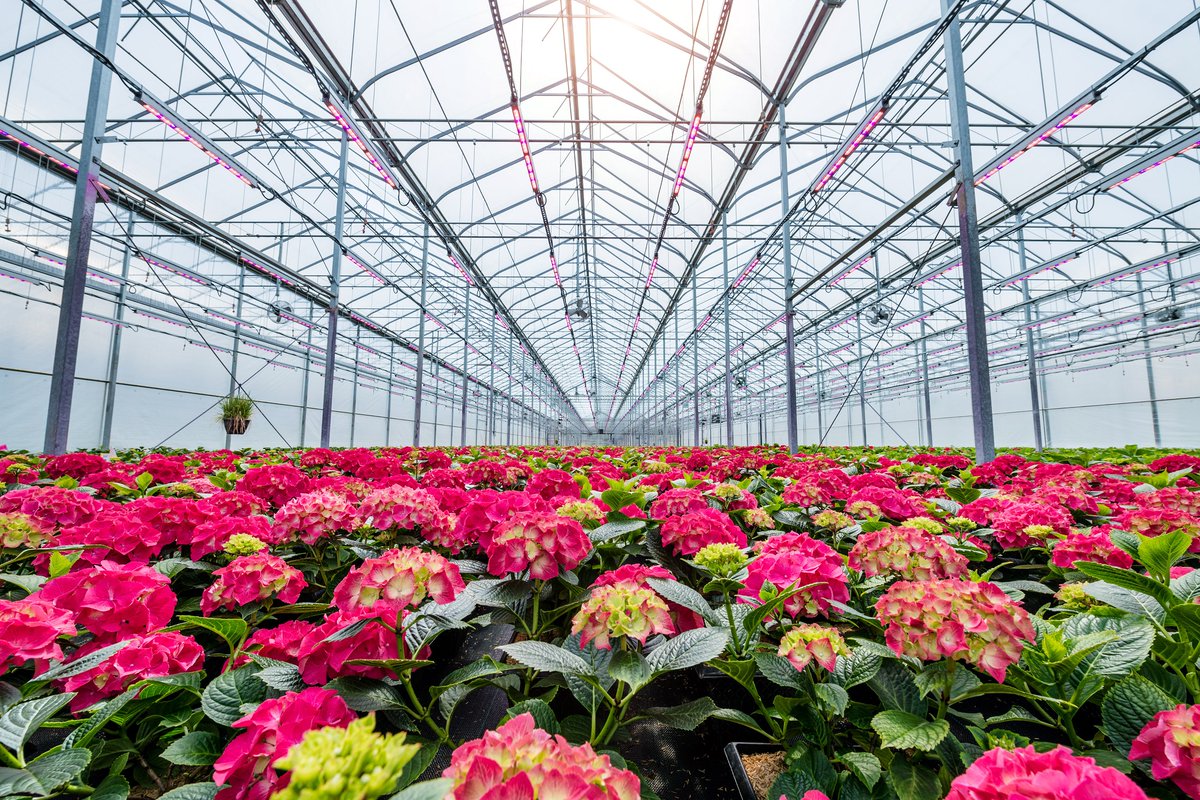
The solution
Van Belle Nursery collaborated with Philips certified horti partner, Fred C. Gloeckner Company, alongside the Philips key account manager and Philips plant specialist, to develop a custom light plan and light recipe. Costa described the process, “We work together with Philips and with Philips plant specialist. We looked at plants, the light intensity and the quality of the light that we have in the period that is critical for our crops and we design together the best option for the crop we grow.” The plant specialist recommended the LED spectrum of deep red/white low blue (DR/W LB) to ensure the crop received 12 mols per day with a lighting period of 12 hours per day during the prime growing window of January to April.
Potted Hydrangea grown under LEDs (left) vs potted hydrangea grown under natural light (right)
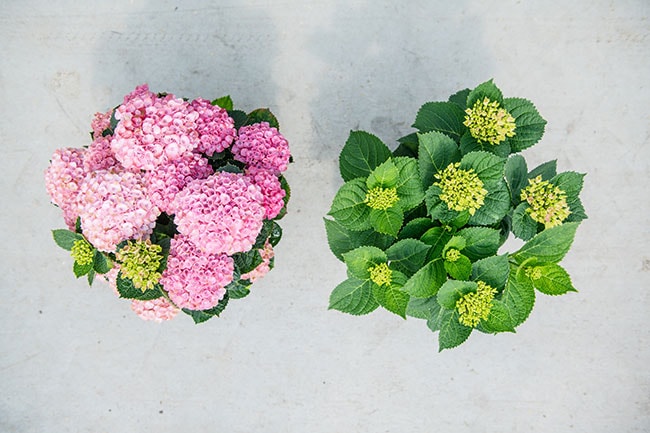
Benefits
Installing the Philips GreenPower LED grow lights over their hydrangea area, Costa noted an overall improved crop quality along with:
• Reduced crop cycle by 2-3 weeks • Optimized plant photosynthesis with the daily light requirement, which resulted in improved coloration of red hydrangea
• Precise and reliable scheduling • Easier to manage the crop because of the low heat radiation of Philips LED toplighting
• Reduced application of PGRs by 10% while keeping crop compact Growing under the LEDs greatly improves their crop scheduling.
Now Costa can be assured he will have beautiful hydrangea on time and ready to ship even with the unpredictable winter conditions in British Columbia. Costa sees great potential growing under LEDs and is now testing different varieties and different crops. “I’m very happy with the Philips [LED] lights that we have here and [have] tested different crops so it’s a game-changer for our company.”
Greenpower LED top lighting
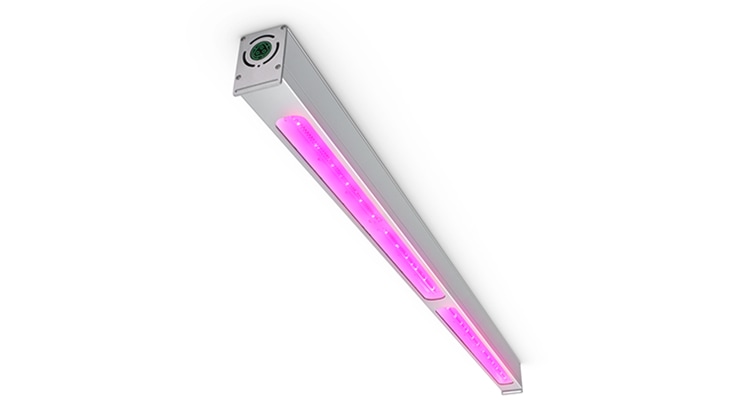

November 14, 2023
How lighting technology can help reduce risks to migrating birds